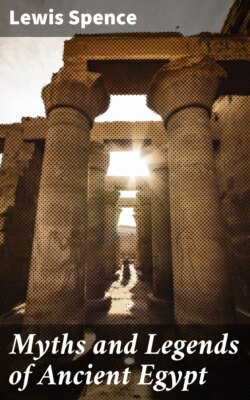Читать книгу Myths and Legends of Ancient Egypt - Lewis Spence - Страница 27
На сайте Литреса книга снята с продажи.
Town Planning
ОглавлениеThe plan of a town excavated shows the houses gathered closely around the temple and its square enclosure. This served as fortress and refuge if the town were attacked. The plan was regular in towns that were built in one period, with wide paved streets running at right angles and provided with stone channels to carry off water and drainage. The buildings were arranged in line. In cities that were the product of centuries there was, however, great irregularity—houses heaped in mazes of blind alleys, and dark, narrow streets. There was generally an open space, shaded by sycamores, used two or three times a month as a market-place. The poorer classes were housed in hovels, rarely exceeding 12 or 16 feet in length, and little better than the huts of the fellaheen of to-day. The houses of the middle class, such as shop-keepers, small officials, and foremen, were of a better description, though rather small. They usually contained half a dozen rooms, and some were two or three stories high, while narrow courtyards separated them from the street, though more often the house fronted directly on the road and was built on three sides of a courtyard. That excellent sanitary and hygienic conditions were known in ancient Egypt has been amply proved, for even poorer houses at Kahûn boasted a stone tank, and this luxury was universal except among the very poor. At Tell el Amarna, in the house of a high official of the Eighteenth Dynasty, an elaborate bath and ingenious system of water-supply have been found. The arrangements of the ordinary house were much the same as obtain in the East of to-day, the ground floor including store-rooms, barns, and stables; the next for living and sleeping; the roof for sleeping in summer, while here also the women gossiped and cooked. An outside staircase, narrow and very steep, led to the upper rooms. These were oblong in shape, and the door was the only means of ventilation and lighting. For decoration the walls were sometimes whitewashed, or decorated with red and yellow, or painted with domestic scenes.
